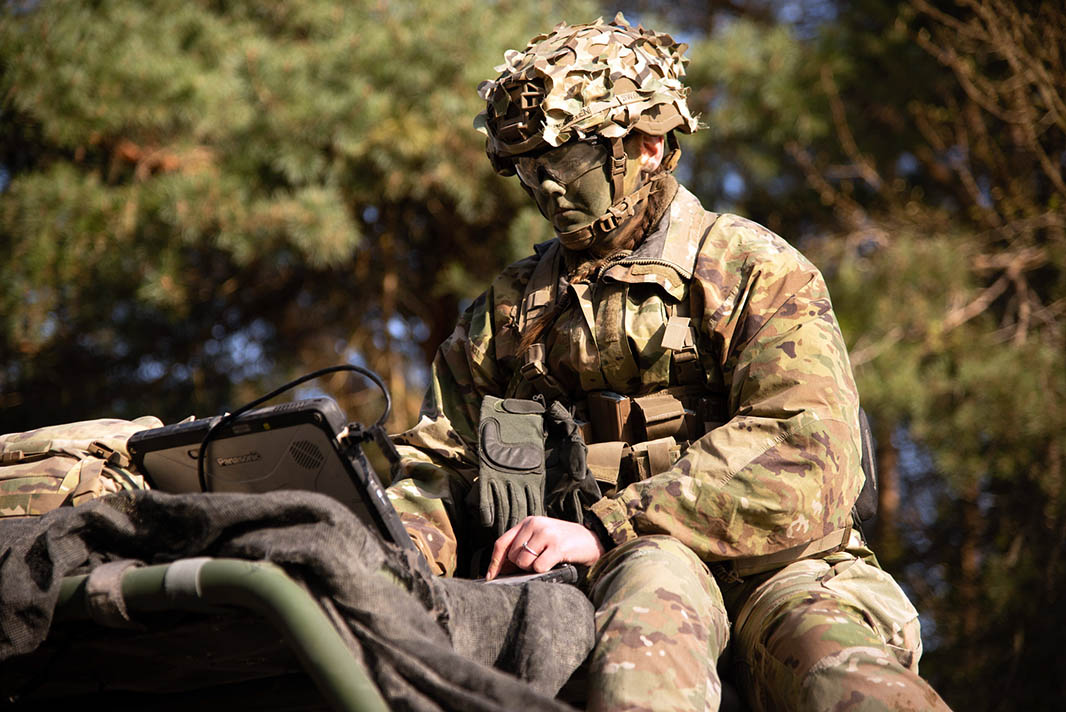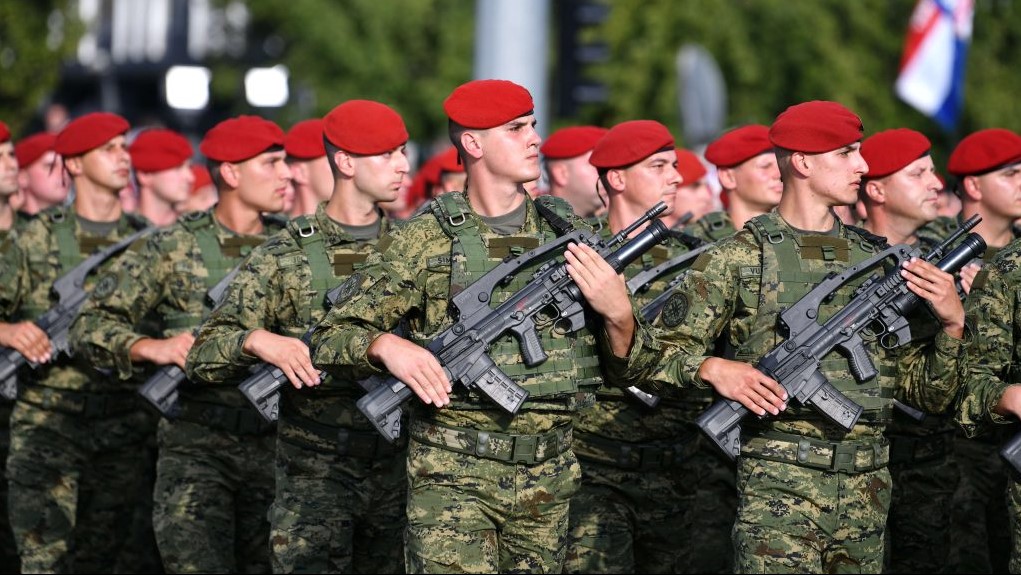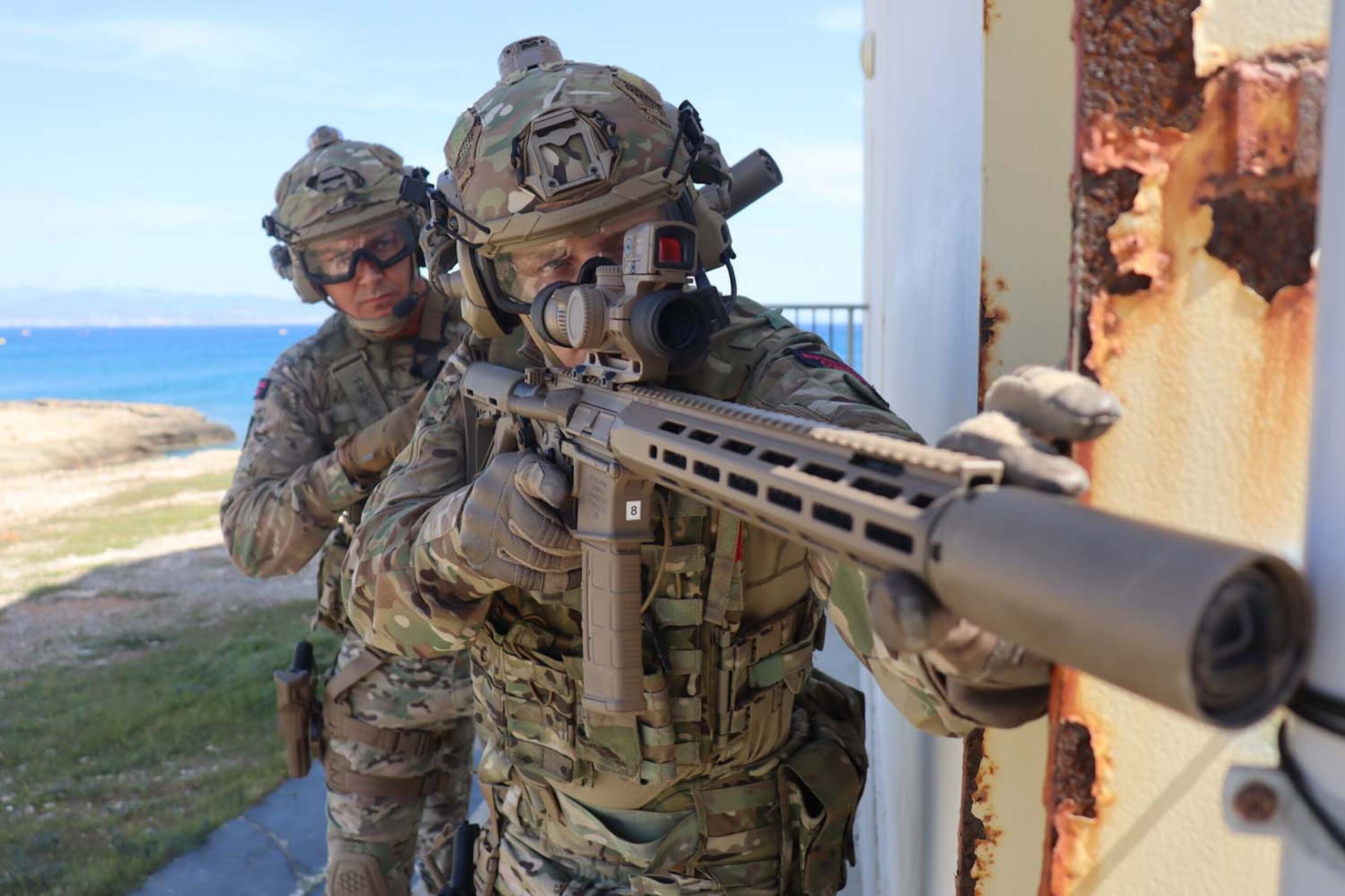The US Army’s Radio Frequency Data Pilot initiative is developing capabilities to handle data and develop effects in support of electromagnetic manoeuvre warfare.
It is probably fair to argue that the radio spectrum in the Ukraine theatre of operations is the most congested and contested the world has ever seen. Russia and Ukraine depend on this spectrum for command and control (C2) and intelligence, surveillance and reconnaissance (ISR) with conventional and satellite radio communications links providing the all-important connectivity for the flow of C2 voice and data traffic. Signals from space convey positioning, navigation and timing (PNT) data from global navigation satellite system (GNSS) constellations. These PNT signals guide everything from troops to missiles, while also providing the timing information that automated systems and networks rely on to synchronise and govern their processes. Radars, be they positioned on the ground, in the air, on weapons or naval vessels, use radio signals to find, identify and track targets; these same radars may also help direct weapons to their targets. Radio and radar signals will collectively be known as radio frequency (RF) signals in this article.
Alongside the Russian and Ukrainian militaries, civilians also depend on the radio spectrum for cellular, satellite and conventional telecommunications. Broadcasting, emergency services and the private sector also rely on the spectrum for communications and PNT provision. To compound this congestion, military RF signals do their level best to be as difficult as possible to detect. Find the signal, and you find the asset, says the electronic warfare adage. RF emissions can potentially be used to pinpoint the location of the asset transmitting them. That asset could be an armoured vehicle, a soldier, warship, aircraft, sensor, weapon or headquarters. Once an asset is found, it can be struck with kinetic fires. Likewise, the asset’s RF signals can be attacked electronically using jamming. Networked military assets across sea, land, air, space, and cyberspace domains can be attacked with RF signals modulated with malicious code, directed at the networks they rely on. Once inside the networks, the cyberattack goes to work; individual assets may be infected with the malicious code, as might digitally-dependent battle management and C2 systems. Electronic warfare (EW) delivered cyberattacks not only have the propensity to cause chaos; they can also be useful vectors for stealing valuable data.
Such is the military value of the radio spectrum, as ongoing conflicts in Ukraine and the Middle East are proving, that navies, armies, air, space and cyber forces are looking to secure ‘spectrum dominance’. What this means in practice is hard to define, and the term has become something of a cliché. Nonetheless, the term can be translated as the capture and sustainment of electromagnetic superiority and supremacy (E2S). E2S is achieved through electromagnetic manoeuvre, which emphasises the continuous movement of friendly electromagnetic capabilities to gain an advantage over hostile forces within the spectrum. Manoeuvre in the spectrum can be performed at the tactical, operational and strategic levels of war across the spectrum of conflict. This approach to electromagnetic spectrum operations is as relevant to counterinsurgency warfare as it is to high-intensity combined arms battle.
Borrowing from airpower theory, electromagnetic superiority is the condition in which red force electromagnetic capabilities can only sporadically challenge blue force spectrum ownership. Electromagnetic supremacy is won when red forces are incapable of any meaningful interference of blue force spectrum use. E2S can be both spatially and/or temporally limited, depending on the demands and exigencies of electromagnetic combat and the overriding mission.
In a nutshell, the electromagnetic spectrum is a manoeuvre environment much like the domains mentioned above. A key difference, however, is that the electromagnetic spectrum spans all these domains, and operations across them all depend on spectrum access and ownership. As such, it is probably more appropriate to refer to the electromagnetic spectrum as an environment as opposed to a domain.
It could also be argued that the radio spectrum is becoming so complex that it soon risks eclipsing the limits of human cognition to find, fix and engage a signal of interest (SOI). According to the research company Datareportal, as of 2024, Ukraine had 55.6 million cell phone network subscribers and add hundreds of thousands more military assets using the radio spectrum in some shape or form. Military spectrum users will employ radio signals using communications/transmission security (COMSEC/TRANSEC) protocols such as frequency hopping to hide in this electromagnetic morass. These same signals often employ low probability of interception/detection means to make them difficult to detect.
Concept of operations
The US Army Cyber Command’s (ARCYBER) Radio Frequency Data Pilot (RFDP) initiative is helping make sense of the spectrum, and to enhance the force’s ability to manoeuvre within it. In essence, the RFDP is a software experiment aimed at making the spectrum easier to comprehend, and thus exploit. The army became interested in its ability to exploit relevant RF battle management data in 2021. The result of successive army studies between 2021 and 2024 was that the force needed to “(o)perate in the electromagnetic spectrum with agility to manoeuvre and deliver effects at the operational pace”, according to a US Army presentation. The presentation continued that the RFDP will perform experiments to identify requirements for “RF data triage, transport and follow-on data analysis and countermeasure/RF effects capability development”.
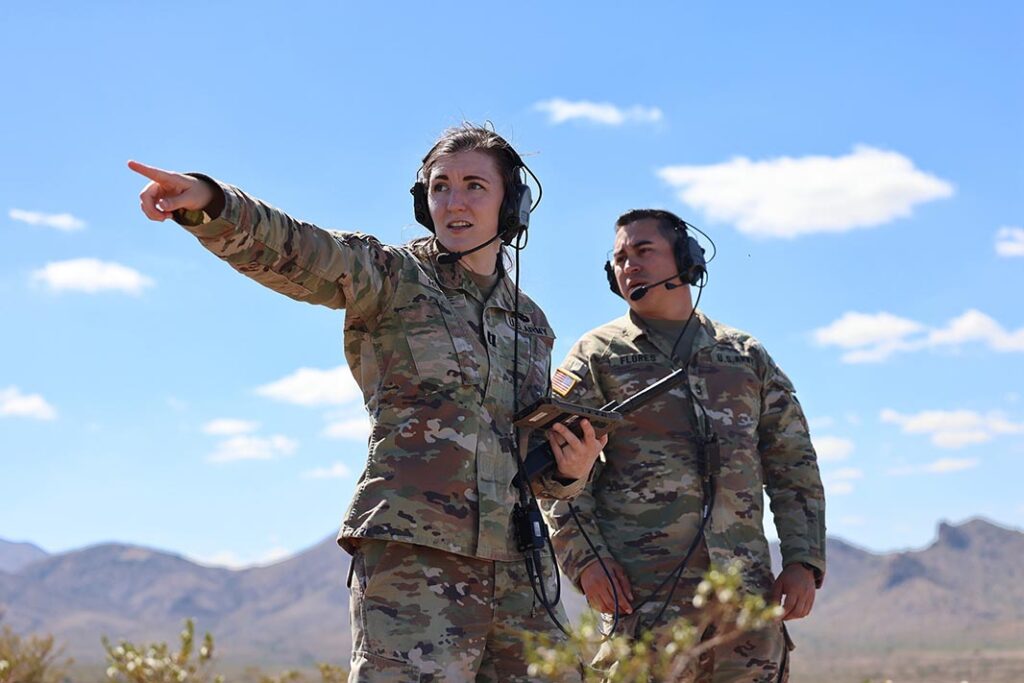
In essence, the RFDP experiment will ascertain methods to prioritise RF-relevant data. What this may mean in practice is that the importance of that RF data might be weighted. Consider this scenario: Blue force communications intelligence (COMINT) gathering reveals the positions of stationary red force troops. The troops’ RF emitters, notably their radios, are stationary, which may indicate that the platoon is resting or awaiting orders. Should that COMINT now show that those radios are moving at speeds of circa 35 km/h (22 mph), this may indicate that the platoon is mounted in its vehicles; any upsurge in radio traffic may indicate an attack is imminent. An EW practitioner does not need to break into the red force traffic to discern these potential events, as even a sudden loss of all red force radio signals may indicate the platoon is observing emission control conditions which may also be a possible prelude for an attack. This example illustrates how different data can be weighted according to what the data are representing. The value of this information, and the need to share it with the blue force unit facing the red force’s possible axis of advance, changes.
Before sharing, the data highlighted above may need additional analysis. What types of radios might the red force unit be using, based on the parameters of the signal detected by the blue force EW cadres? Let us suppose they are detecting VHF transmissions from P-187 Azart radios equipping a Russian Army motorised rifle platoon. The radio traffic from the handheld P-187P1 radio is using a 1 MHz waveband stretching from 42 MHz to 43 MHz. These signals use a frequency-hopping rate of 50 hops-per-second across this waveband. The signal has an effective radiated power of 31 dB, reducing to circa -86 dB at a range of 12 km. P-187 series radios are being introduced into Russian land forces although anecdotal evidence suggests that, as Russia’s most advanced tactical radios, these are initially equipping elite units. Observing the signal parameters detailed above allows EW cadres to determine with high probability that the signals they detected are from P-187 radios. The fact that this radio model that has been discerned may indicate that local blue forces might be about to face attack by an elite Russian unit.
As noted in the US Army presentation, the RFDP is seeking to advance “countermeasures/RF effects capabilities development”. What this could mean in practice, returning to our above example, is that appropriate countermeasures could be rapidly devised and disseminated to the blue forces facing the expected Russian attack. By comprehending the signal parameters of P-187 radios it becomes possible to draft a jamming waveform which might prevent these radios communicating with one another. Perhaps the jamming waveforms are already available and ready for use? Alternatively, could artificial intelligence algorithms rapidly configure jamming waveforms that show promise of being effective? Maybe the blue force EW cadres at the tactical edge already have electronic attack tactics they can bring to bear? Either way, the goal of the RFDP undertaking is to accelerate the pace at which electronic attack effectors can be placed in the hands of those who need them.
Stakeholders
The RFDP comprises scores of stakeholders beyond US Army Cyber Command: The Army Cyber Centre of Excellence is involved along with the force’s Programme Executive Office for Intelligence, Electronic Warfare and Sensors. Other participants include the Army Command, Control, Communications, Computers, Cyber, Intelligence, Surveillance and Reconnaissance Centre, the Army Intelligence Centre of Excellence and Army Futures Command. Alongside the objectives discussed above, the results of the RFDP will influence how the army will fight in the future within the electromagnetic spectrum.
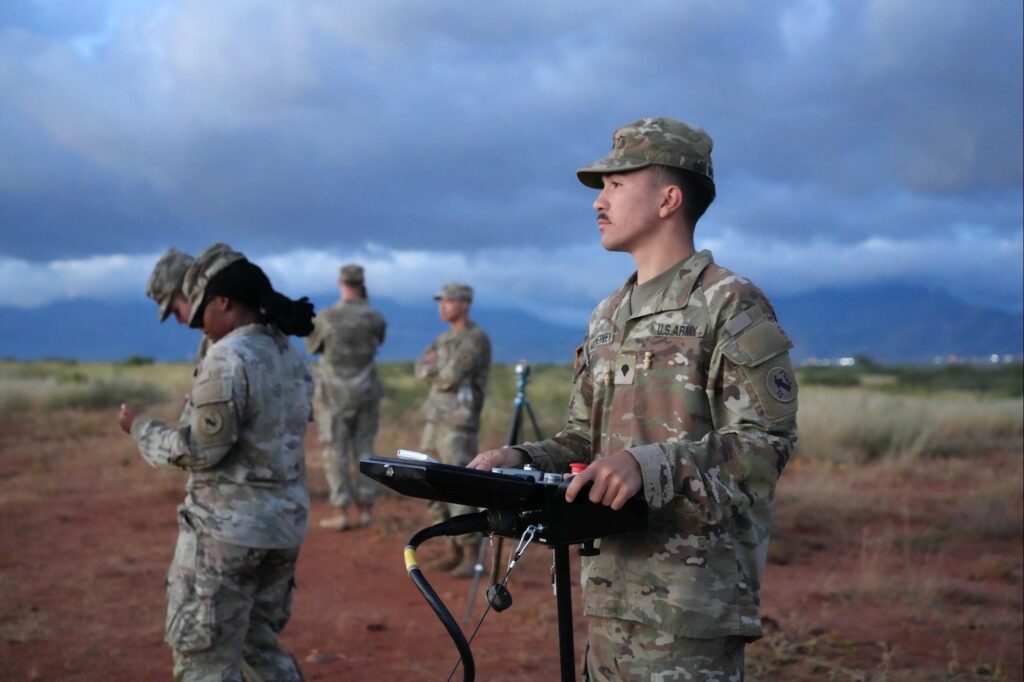
To this end, relevant RFDP capabilities have been put through their paces during recent exercises, including Vanguard 24 at Fort Huachuca, Arizona in September 2024. According to a US Army report on the event, Vanguard 24 “delved into high-altitude sensors, terrestrial systems, and microsensors and explored electronic warfare capabilities that can traverse vast distances”. The event was co-sponsored by the US Army Intelligence Centre of Excellence and the force’s Intelligence-Capability Development Integration Directorate. The article continued that the exercise offered a glimpse of emerging technologies and programmes of record that could influence warfare in the 2030 to 2040 timeframe. Technologies participating in the exercise included aerostats, crewed and uncrewed aircraft, along with space-based sensors. A key aim of the exercise relevant to the RFDP was the ability to gather, process and share data with participants.
ARCYBER told the author that the RFDP is essentially an operational experiment which “informs programmes of records, government and commercial-off the shelf solutions, and strategic force modernisation”. The outcomes of the RFDP will “impact army doctrine, organisation, training, materiel; leadership and education; personnel and facilities policy adjustments”, ARCYBER’s statement continued. While some of the experiment’s outcomes may result in the exploitation and realisation of tangible technologies “others will refine policies and operational frameworks”, while ultimately, all efforts are “aimed at enhancing lethality in the electromagnetic spectrum”.
Army deliverables
More tangibly, the US Army is in the midst of a major overhaul of its manoeuvre force EW assets. This effort includes the procurement of the Terrestrial Layer System (TLS) family of capabilities. TLS will deliver a tactical manoeuvre force electronic warfare system in the guise of the TLS BCT (TLS Brigade Combat Team). Mastodon Design is delivering the backpack, dismounted element of the overall TLS BCT requirement, while Lockheed Martin is delivering the vehicle-mounted TLS BCT component. Operational-level manoeuvre force EW will be provided by the TLS EAB (Echelon Above Brigade) architecture and Lockheed Martin is also involved in the TLS EAB provision. The battle management and C2 element for army manoeuvre force EW is being provided by Raytheon’s Electronic Warfare Planning Management Tool (EWPMT). The ARCYBER statement added that results of the RFDP could be implemented into capabilities such as TLS and EWPMT where relevant.
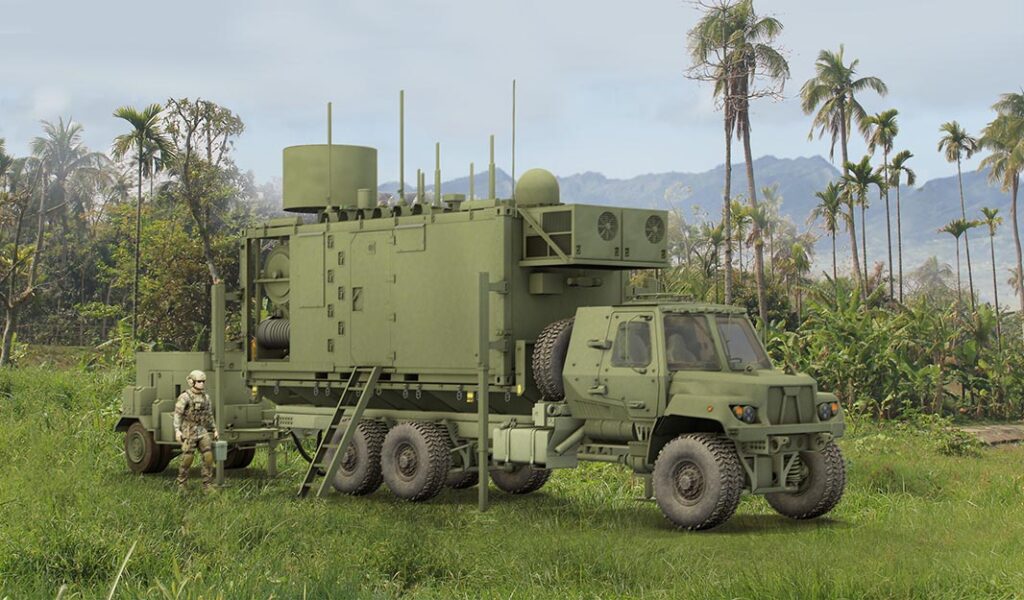
Technologies developed via the RFDP are being developed to Technology Readiness Level Six (TRL-6). According to US Department of Defense definitions, TRL-6 means that a system or subsystem has been demonstrated in a relevant environment. Clearly, efforts like Vanguard 24 play an important role in this regard. The ARCYBER statement says these TRL-6 outcomes will establish a “foundation for effects generation and delivery”. In essence, an architecture will be developed that can generate required electromagnetic effects, such as electronic attack waveforms, and deliver these effects accordingly. Another key outcome is that these effects should be deliverable using multiple and disparate systems. Taken further, this means that effects will not necessarily be deliverable solely via the TLS variants, but via other RF emitters where possible: If it is more appropriate to deliver desired electromagnetic effects through a jamming payload equipping an unmanned aerial vehicle (UAV), then so be it. From the data standpoint, RFDP will inform the architecture design to ensure that electromagnetic data is delivered to commanders at a pace relevant to the mission.
The initiative formally commenced in October 2024 with current planning calling for the RFDP to run until the end of the 2025 US fiscal year, according to ARCYBER. Following the RFDP’s conclusion, there is the possibility of the programme continuing, or implementing the experiment’s outcomes into US Army EW capabilities. The programme’s deliverables will be realised via a series of milestones. RFDP milestone-1 will develop the architectures for rapid effects generation and delivery. Milestone-2 will continue with rapid effects generation and programming while milestone-3 will look at techniques for sharing electromagnetic data with allies and partners. Integral to all these milestones, ARCYBER said, is developing a series of standards to ease the interforce and intra-force handling of data.
It would be easy to characterise the RFDP as primarily fixated on technology, but ARCYBER insists that the initiative’s goals are deeper: “The RF Data Pilot is about more than just new technology,” says Steven D. Rehn, deputy to the ARCYBER’s commanding general for support: “It’s about empowering commanders at all levels to ‘own’ the electromagnetic spectrum and enable our troops on the ground to be more efficient.” Through initiatives such as RFDP, Army Cyber Command is “giving (the manoeuvre force) the tools to make faster, more informed decisions and generate RF effects supporting their operations in an increasingly complex battlespace”. Moreover, it is easy to perceive the RFDP as purely relevant to electromagnetic manoeuvre, but this is disingenuous. Electromagnetic manoeuvre is not an end in itself. The capture and sustainment of E2S is relevant across all domains, at all levels of war across the spectrum of conflict. For the US Army, the RFDP’s deliverables “protects our boots on the ground and gives them the battlefield advantage against our enemies”.

Thomas Withington
